Geology 307 Exam 3
1/37
There's no tags or description
Looks like no tags are added yet.
Name | Mastery | Learn | Test | Matching | Spaced |
|---|
No study sessions yet.
38 Terms
Originating going extinct graph
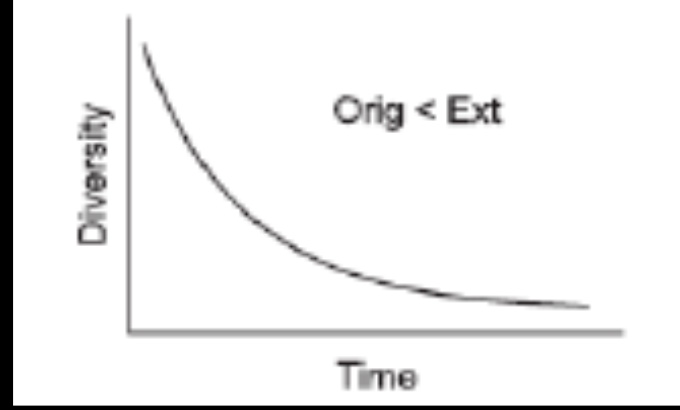
Extinct going original
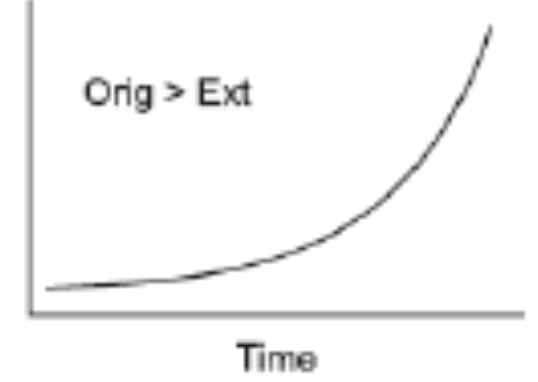
Extint = orgional (dead)
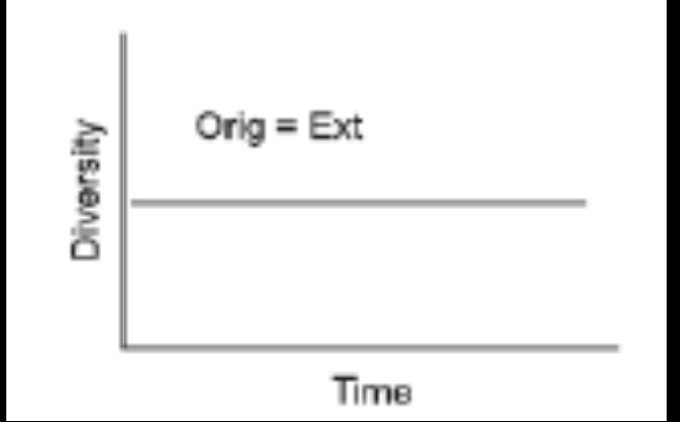
What method is commonly used to simulate biodiversity through time?
Monte Carlo Method (lots and lots of random trials)
Walther’s law of correlation of facies
The principle that facies that
occur in a comfortable vertical
successions of strata also
occur in laterally adjacent
environments.
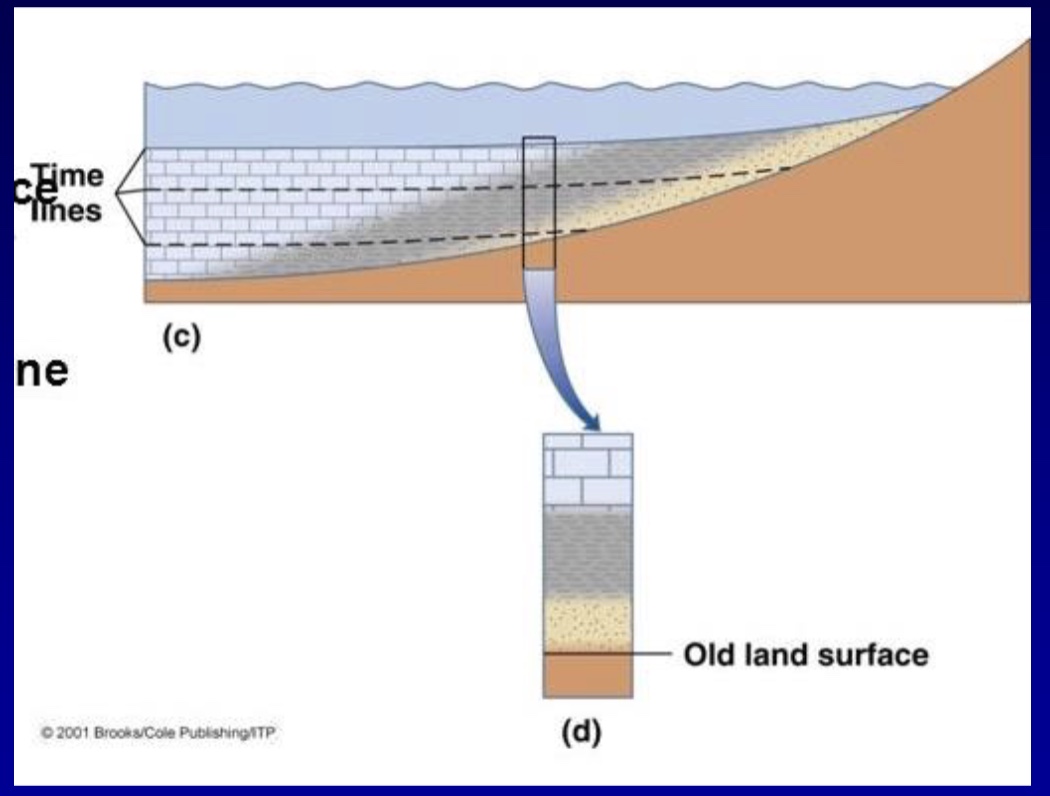
Walther’s Law Transgressive
Facies show a transgressive pattern when the
The sediment supply is overpowered by a relative rise in
sea level, or when the land subsides tectonically.
Both cause the shoreline to move landward
Walther’s Law
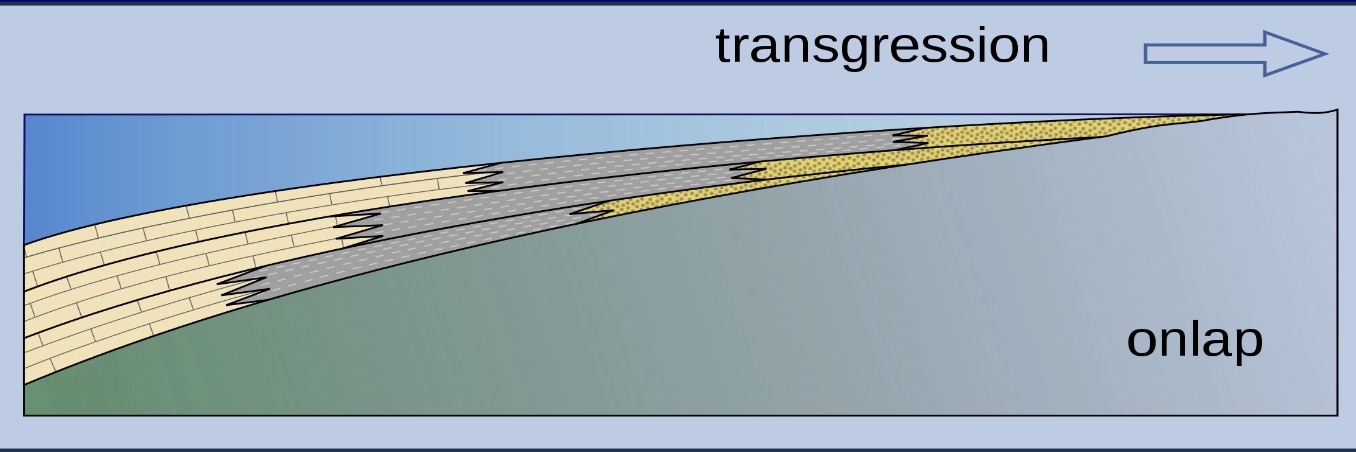
Walter’s Law Regression
Facies show a regression pattern when the
shoreline moves seaward due to an excess of sediment
supply from land, when the land is tectonically
uplifted and the sea level retreats, or when there is
a relative lowering of sea level.
Walther’s Law

Ecology
Is the interrelationship between organisms and their environment
Paleoecology
It is ancient ecology.
The study of the interaction of ancient organisms with
their environment.
modern analogs
to help us interpret something
about how the fossils lived and related to
their environment.
Biosphere
The region of the earth that encompasses all living organisms: plants, animals, and bacteria
Ecosystem
the organisms and their environment - the
entire system of physical, chemical, and biological Factors influencing organisms
Community
The association of several species of organisms in a particular habitat (the living part of the ecosystem)
Habitat
The environment in which the organism lives
Niche
How the organism lives - its role or lifestyle
Paleocommunity
an ancient community
The 6 Trophic Levels
Primary Producers (autotrophs)
Consumer (heterotrophs)
Carnivores
Decompressor (transformers)
Parasites
Scavengers
Scavengers
derive nutrition from dead organisms
Vultures
Parasites
Derive nutrition from other organisms without killing them
Tapeworm and fleas (feed inside the animal)
Decomposer and Transformer
bacteria and fungi, which break down organic matter, converting it into a form that can be utilized by other organisms (nutrients)
Earth Worms, Maggots
Carnaviors
heterotrophs that eat herbivores and
other carnivoresLions
Consumers or heterotrophs
cannot produce their
own food and must eatDinosaurs eat leaves
Bioson eats wheat
paleoautecology
Study of the life habits of a single fossil
species and how that species relates to its environment
paleosynecology
study of paleocommunities (community
= groups of species that interact within a given habitat)Rather than individual species
Physical Factors
Temperature - movement and activity are represented in cold water
Oxygen-depleted basin
Water Depth - related to many factors; for example, deeper water is
usually colder, less turbulent, and has a finer substrate
Biological Factors
Competition - when the activity of one organism precludes the presence of another
Predation - naticid gastropod borings
Larval Recruitment - what organisms get there first can
determine community structure
What are the differences between diversity and abundance?
Diversity refers to the variety of species present, while abundance refers to the number of individuals within each species
What is Conservation Paleobiology?
Conservation biology seeks to integrate
evolutionary theory with environmental reality
to predict how an animal/population/species
will react to future/current changes, usually
human-caused, in its environment/density/
distribution. Most importantly, whether it will
survive and what to do to prevent extinction
How can studying past extinction events help in understanding and preventing
Future extinctions?
By analyzing the fossil record and other geological data, scientists can identify patterns of extinction, understand how different species responded to environmental changes, and assess the long-term impact of these events on biodiversity
How to differentiate between life and death assemblages
Death Assemblage
An assemblage where not all species present in the community are represented as fossils (similar size, abrasion)
• Not all the fossil species within the assemblage lived in the community
Life Assemblage
An assemblage or group of fossil remains found where they
lived (modern life assemblage)
Describe how fossil assemblages can provide insights into past ecosystems and
communities
By analyzing the types, abundances, and spatial relationships of fossils within an assemblage, scientists can reconstruct ancient environments, understand ecological interactions, and trace the evolution of species over time
Discuss the factors that influence the composition of fossil assemblages.
Materials like calcium phosphate (in bones) or mineral shells are more resistant to decay than chitinous shells or soft tissues.
Fine-grained sediments like clay and silt can preserve fine details, while coarser sediments might destroy fossils
Define extremophiles and provide examples of extreme environments where they
thrive
love of the extreme
= an organism that thrives under "extreme" conditionsAntarctica dry wall
low oxygen
high salt concentration
radioactive decay
What is “extreme” relative to?
Humans
What are tardigrades?
Water bears
microscopic, eight-legged animals known for their incredible hardiness and ability to survive in extreme environments. They are considered one of the most durable life forms on Earth, capable of surviving harsh conditions like extreme temperatures, radiation, and even the vacuum of space
Explain the significance of studying extremophiles for understanding the limits of
Life on Earth and the potential for life on other planets.
They demonstrate that life can thrive in conditions previously considered inhospitable. By analyzing how these organisms survive and reproduce in extreme environments, scientists can refine our understanding of the boundaries of habitability and develop strategies for searching for life beyond Earth.
Define the Sixth Mass Extinction and discuss its causes
Holocene Extinction or Anthropocene Extinction refers to the current ongoing, accelerated extinction of plant and animal species, primarily driven by human activities. Unlike previous mass extinctions caused by natural events, this one is primarily caused by human impact on the planet
Compare the Sixth Mass Extinction with previous mass extinction events in
Earth's history
Driven by human activities, differs significantly from previous mass extinctions caused by natural phenomena like asteroid impacts or volcanic activity